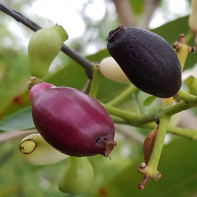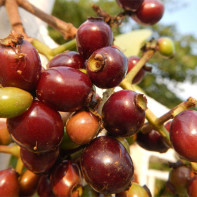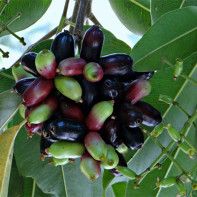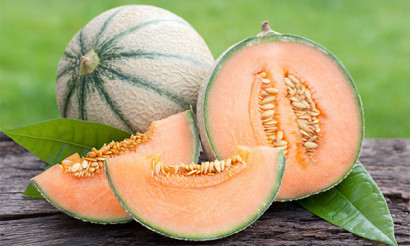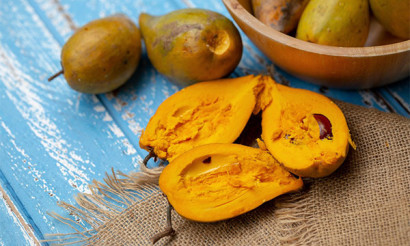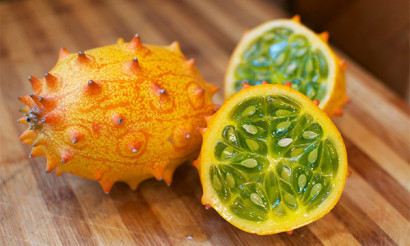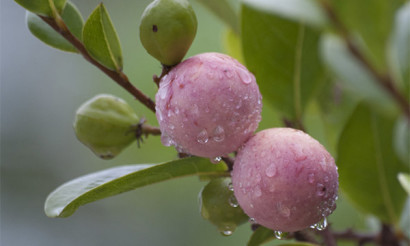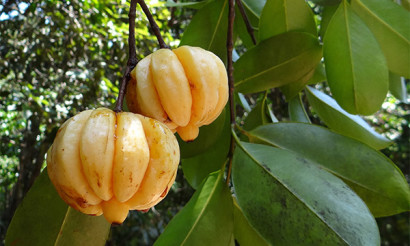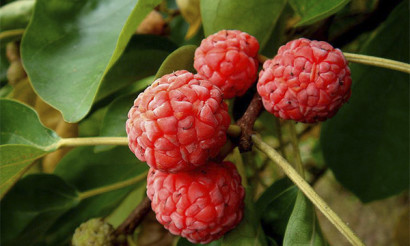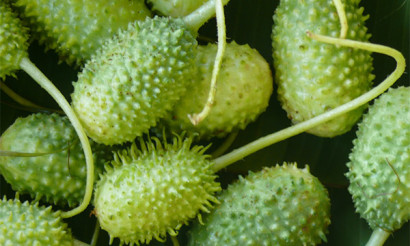Jambolan: what kind of fruit is it and how is it healthy
This heat-loving fruitful tree of the myrtle family is called jambolan. There are other names that are unusual in our country: yambolan, black plum, Indian blackberry, Java plum, jamun, purple plum, jambul, Japanese plum.
The geography of Japanese plum is extensive. It is easy to find the plant in India, the Himalayas, Malaysia, Sri Lanka and Australia, as well as in Africa, South America, the Caribbean, Indonesia, the Cook Islands, French Polynesia and New Caledonia.
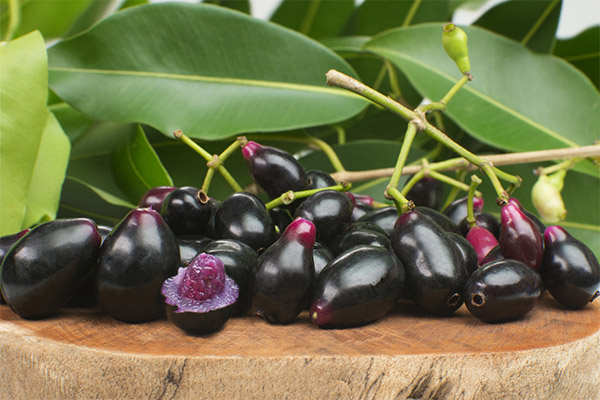
This is a powerful evergreen tree, tossing up 20 meters high. The leaves are heavy, ragged, cirrus, emit a strong smell of turpentine. The crust is scaly, near the ground is rough and covered with cracks. Flowers from pink to white shades smell fragrant, attracting bees.
In due time, the flowers become fruits of the shape of an ellipse, 2-5 cm long. The fruits ripen either in small groups or in clusters, the number of berries is up to 40 pieces. First, the berries are green, then they gradually gain color and eventually become almost black. The fruits ripen in June and are easily showered under the blow of the wind. They taste sweet with a noticeable acidification. The pulp is juicy, often astringent, from white to lavender. But the tongue after the ripe plum sample becomes purple. In the center of the fruit are the seeds.
Distribution history
Black plum comes from Southeast Asia. She registered in India, Burma, Ceylon, and the Andaman Islands. The tree is held in high esteem by Buddhists. It is customary to plant it in the immediate vicinity of Hindu temples as a sacred tree for Krishna.
It is believed that in the Philippines, Java and other places of the East Indies, the jambolan was distributed in prehistoric times. Otherwise, how can one explain the religious veneration of a tree?
Curious fact! At the end of the 19th century, the jambolan sprouted in Hawaii. But at present he has occupied the islands so that they have already begun to destroy it by all means. Locals and vacationers are outraged by the shadow that the plant casts on the ground. It is too far from the sun to cover other growths.
He was also brought into Israel around the middle of the last century. It is warm there, and the plum grows rapidly, but gives few fruits. Yes, and they are not valued in Israel. Trees are bred just like ornamental plants.
In America, the jambolan finally lost respect. Fruits poured into the streets, clogged sidewalks and lawns. Insects swarm around them. Therefore, Americans are trying to get rid of trees as soon as possible from garbage.
Growing conditions
Sizigium yambolan (scientific name) with pleasure takes root on the plains and low elevations, up to 1800 m above sea level. However, the higher, the less fruit. And in some places, wood is used only as a source of wood.
It feels comfortable in regions with heavy showers, thrives near rivers and, as observations show, calmly survives prolonged floods.
Despite this, the jambolan is quite patient in arid places where there is low humidity. He intensively grows up, fully growing up to 40 years old, likes dry weather at the time of blossoming of flowers and ripening of fruits. Young seedlings are afraid of frost, and older trees do not pay attention to short frosts.
The plant has a predilection for survival in low, moist soils, but can also adapt to elevations, preferring sandy or loamy soils.
Harvest
The Japanese plum tree begins to bear fruit when it is 4–5 years old. If the conditions are favorable, then the fruits are full of baskets.
In different places, the crop ripens in different periods, starting in early spring, and in the Philippines - from mid-May to summer. In Hawaii, fruit is harvested towards the end of summer and even in autumn. For example, in Japan, Japanese plum blossoms only late in the summer to mature closer to the end of autumn.In Ceylon, the tree is covered with flowers for almost all the summer months, and the crop is ready for harvest in November and December.
The intensive harvesting period in India lasts from spring to fall. The process is carried out only manually. It happens that in favorable years and more than once you have to go out with baskets to the plantations. On a 5-year-old tree, 700 berries are considered a good gift. Big trees are much more generous.
Chemical composition
Different parts of the tree have long been adapted by the population of Japanese plum habitats to cure. Therapy is facilitated by the presence of a number of chemicals in them.
- The leaves contain flavonol glycosides, quercetin, myricetin, triterpenoids, esterase, carboxylase galloyl and tannin.
- The bark of the trunk is rich in betulinic acid, fridelin, ether and epifridelanol, quercetin, kempferol, myricetin, has tannic properties.
- Berries, in addition to the ingredients already listed, are full of raffinose, glucose, fructose, acids - citric, malic, gallic, anthocyanins. The acidification of taste is mainly due to the presence of gallic acid. They also contain numerous vitamins - A, C, PP and B.
- The composition is interesting in the presence of various minerals (phosphorus, chlorine, copper, sodium, iron, potassium, magnesium, calcium, sulfur), resins, fats, proteins, fiber, gallic and oxalic acids, essential oils, phenols, alkaloids, mono- and disaccharides.
What contains Japanese plum per 100 g of fruit:
- water - 83.7–85.8 g;
- protein - 0.1–0.129 g;
- fats - 0.15-0.3 g;
- fiber - 0.3-0.9 g;
- carbohydrates - 14 g;
- calcium - 8.3-15 mg;
- magnesium - 35 mg;
- phosphorus - 15-16.2 mg;
- iron - 1.2-1.62 mg;
- sodium - 26.2 mg;
- potassium - 55 mg;
- copper - 0.23 mg;
- sulfur - 13 mg;
- vitamin A;
- thiamine - 0.008-0.03 mg;
- riboflavin - 0.009-0.01 mg;
- niacin - 0.2-0.29 mg;
- ascorbic acid - 5.7-18 mg.
The list can be replenished with tannin, gallic acid and traces of oxalic acid, only in very small quantities. Analysis shows that the leaves are rich in useful chemical composition, so they are used as a vitamin for animals.
What can be cooked from jambolana
The astringent properties of the fetus are “quenched" with salted water. Many dry ripe berries. More often consumed fresh. It is advisable to take large ones, because they are tastier. A sweet or slightly acidic taste is to everyone's liking. You can use Japanese plum in pies, sauces, jams.
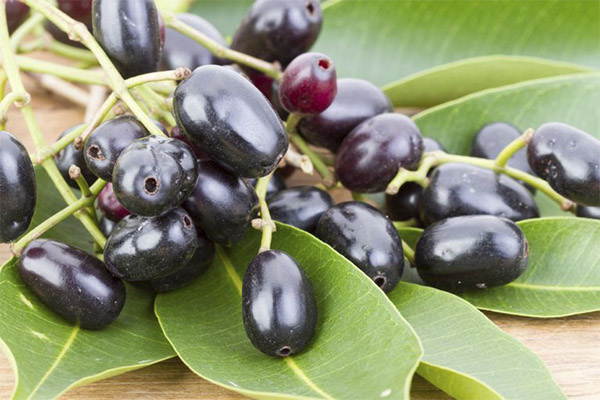
- The least presentable fruit is allowed on juice, which strongly resembles grape. Varieties with white pulp, due to the presence of pectin, are used to prepare thick jelly. Unripe fruits go to vinegar.
- Jambolan juice perfectly matches the desired ingredient to enrich the taste of various syrups and sorbet. In the streets of India, a drink is offered in containers made from shredded fruits and juice. Water, sugar are poured into the mixture, citric acid and some preservative are added. It turns out a drink like lemonade.
- Jambolan is interesting in desserts. Black plum is stuffed in pudding, pies, donuts, used in the preparation of cakes, creams for cakes. The pulp is ideal for cooking jams.
- In many countries native to jambolan, plum is used to make wine similar in quality to port wine. Good liquors, brandy. If the fruit is fermented, it is worth trying to make your favorite local drink, “jambava”.
- In India, the best-selling Jambolan vinegar is produced. It is transparent, has a reddish tint, attractive temptation and attractive taste.
Application in traditional medicine
Jambolan is a old-timer in the medicine business. The population of South Asian countries is saved by this berry for many ailments, including acute diarrhea or urinary retention.
- Various parts of the plant actively influence the inhibition of diabetes. Experiments and studies have confirmed this.It is known that boiled leaf decoction noticeably lowers blood sugar levels in mice. In some countries, dried seed powder is used to prevent disease.
- Black plum juice diluted with water will help overcome sore throat. Gargle. By the way, this same liquid, like a healing lotion, will facilitate the manifestations of ringworm.
- Seeds are used when there are digestive problems. The history of treatment proves that the fruit of the jambolan fights against peptic ulcer and diarrhea. Antibacterial properties destroy pathogens that have occupied the stomach or intestines. In addition, the organic fibers of the pulp and peel normalize the wavelike movements of the intestine for the smooth movement of food masses. Abdominal pain will soothe leaf extract. It is also useful for dermatitis of various etiologies, severe asphyxiating cough, constipation, feverish conditions, and disinfecting effect on the oral mucosa.
- In India, when rashes appear on the skin, the first thing they turn to is poultices from leaves of Japanese plum. And if ulcers appear, then they are treated with a decoction of bark. Bark is also used for anemia, dysentery, and diabetes.
- The treatment of arterial hypertension with the help of decoctions and extracts of bark and leaves of Japanese plum has already become traditional. Fruits contain triterpenoid. The substance prevents the accumulation of cholesterol. This is good for those who have health problems, and for the sake of prevention. Cholesterol inhibitor reduces the risk of heart attack, prevents the deposition of plaques in blood vessels, atherosclerosis and hypertension.
- Useful roots of Japanese plum. Many nationalities use them when a person is affected by seizures of epilepsy.
- A person suffering from bleeding hemorrhoids should start eating black plum, and every day for 2–4 months, so that relief comes.
- The restorative effect will give a decoction of jambolan seeds with honey. It will relieve fatigue, restore strength and tone to the body. For greater effectiveness, you can add amla juice.
- Cases are described when the juice of the leaves saved during the bites of a centipede and acted as an antidote when a person was poisoned with opium.
- The well-known value for the human body of antioxidants. Scientists have discovered these preventative levers in black plum leaves. The essential oils, which are rich in trees and fruits of jambolan, and which are already sharing with people their antibacterial and antioxidant qualities, are still waiting for a close study.
- Black plum fruits contain a lot of vitamin C, which is known to have beneficial effects on the skin. The fact is that, along with antioxidant properties, vitamin is involved in the production of collagen, which prevents early aging. So the skin is regenerated, the appearance improves. In traditional medicine in Asian countries, jambolan seed powder is prescribed when it is necessary to remove scars and spots.
- It has been proven by experience that black plums are not only a joy to gluttones, they are infinitely healthy. Only with a serious pathology of the gastrointestinal tract they cannot be eaten, and the remaining contraindications concern only individual intolerance.
Application area
- Jambolan trees are recognized by beekeepers. Flowers have a high honey content.
- Leaves are used as food for silkworms and livestock feed in India. In Zanzibar, locals brush their teeth with plum branches.
- Essential oil, obtained from leaves, shares aromas in the manufacture of soaps or cheap perfumes.
- Dyes are prepared from the bark of trees. They are resistant, have a lot of shades of brown.
- The bark contains tannin, it is used in the processing of the skin and conservation of fishing nets.
- Wood is too tough for termites, which makes it popular. It can be stored in water for a long time. Of course, time makes adjustments here, and deformation is possible. In India, wood goes to building materials - beams, boards, posts.It was adapted for many sectors of agriculture and non-agriculture. Suffice it to say that railroad ties could previously be plum trees.
- In medicine, traditional medicine and pharmaceuticals, the merits of jambolan are noticeably more noticeable. In pharmacies in Europe, Africa, America, seeds and dried bark are found on sale. Deliveries are made by the countries of Southeast Asia.
Which may be harmful
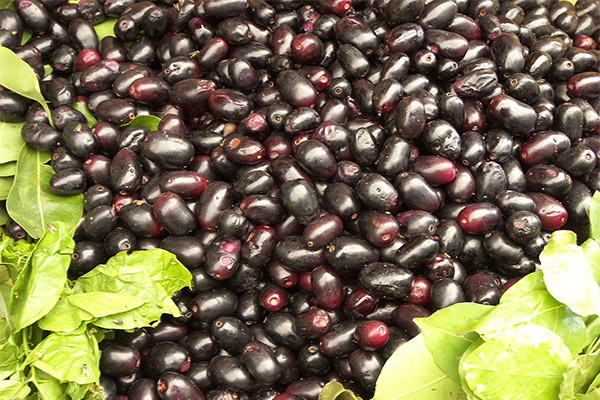
- Beware of taking fruit from a tree growing along the freeway. The fruits absorb lead and other troubles of polluted air.
- Still insufficient study suggests being careful not to offer plums to women in an interesting position and with babies, even for treatment.
- Jambolan lowers blood sugar, so it is contraindicated before the upcoming operation and after surgery.
- Do not eat fruit on an empty stomach and consume milk immediately after a plum is eaten.
Jambolan in its historical homeland is popular and respected. It will not hurt everyone to get to know a black plum better. She's worth the attention!
«Important: all information on the site is provided exclusively in fact-finding purposes. Before applying any recommendations, consult with a profile specialist. Neither the editors nor the authors are liable for any possible harm caused materials. "


